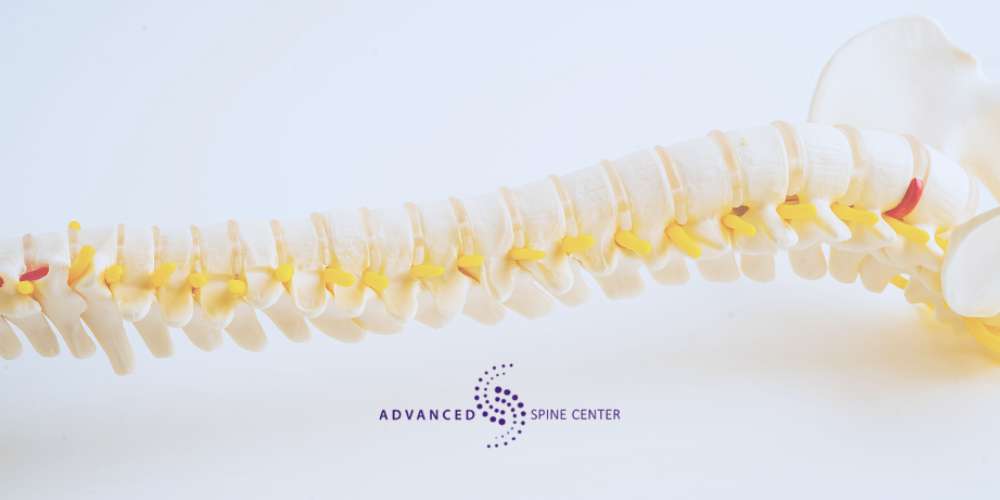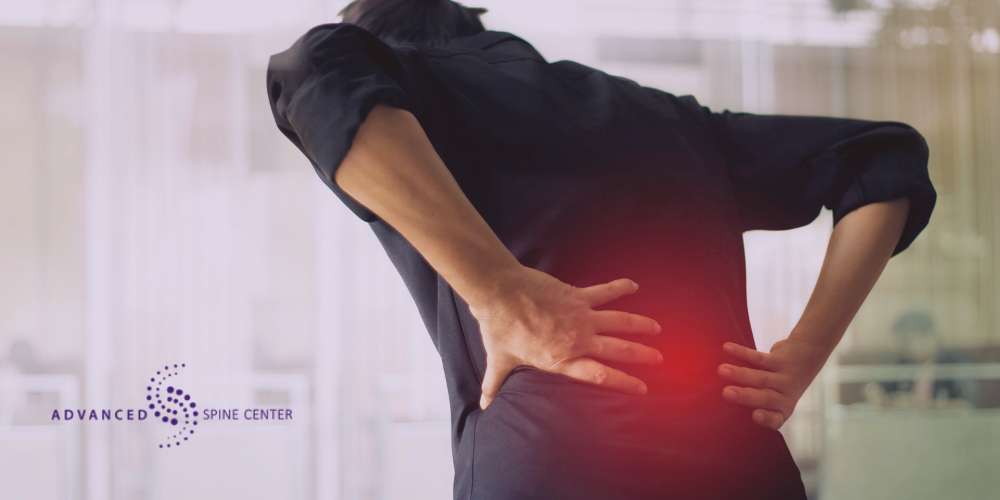Back pain is a common problem that affects millions of people worldwide. Recognizing 8 signs you need back surgery can help you understand when to be concerned about back pain and consult a spine surgeon about treatment options that protect your spinal cord and overall spine health.
According to the World Health Organization, over 600 million people globally experience lower back pain at some point in their lives. While most back pain improves with time and conservative treatments, some cases require more advanced care.
Don’t let back pain hold you back another day. Call the Advanced Spine Center in Plano, Texas, at (972) 499-5457 to take the first step toward relief.
When Is Back Surgery Necessary?
Back surgery is often considered when other treatments have failed to provide relief. It can alleviate pain, improve mobility, and enhance your quality of life. Conditions such as a spinal infection or a degenerative spinal condition may also necessitate surgical intervention. Here are eight signs that might indicate you need spine surgery.
1. You Have Pain Radiating to Your Arms and Legs
When pain radiates from your back down to your arms or legs, it is often a sign of nerve compression. Conditions like herniated discs occur when the outer layer of a spinal disc tears, and the inner layer pushes out. This disc herniation can press on nearby nerve roots, causing sharp, shooting pain.
Similarly, spinal stenosis narrows the spinal canal, leading to pressure on spinal nerves. If this pain continues despite conservative treatments like physical therapy or medications, back surgery might be an option to relieve the pinched nerves.
2. You Have Reduced Mobility
Reduced mobility can significantly impact your daily life. A degenerative spinal condition, such as osteoarthritis, can wear down the articular cartilage in spinal joints, called facet joints, leading to stiffness and pain. Bone spurs may develop as the body tries to repair damaged bones, further limiting movement. If you find it hard to bend, twist, or move without pain and other treatments haven’t helped, minimally invasive spine surgery may restore mobility and provide pain relief.
3. You Have Weakness or Numbness in the Legs
Weakness, numbness, or tingling in your legs can indicate nerve root compression. Pinched nerves occur when structures like herniated discs or bone spurs press on nerve roots. This can lead to loss of strength or sensation in the legs.
If these symptoms persist despite treatments like lumbar spinal injections or physical therapy, imaging tests such as MRI or CT scans can help identify the cause. Surgery may be necessary to relieve pressure and prevent permanent nerve damage.
4. You Suffer from Chronic Back Pain
Chronic back pain that lasts longer than three months can be debilitating. It may stem from various spine conditions, such as degenerative disc disease or spondylolisthesis, where one vertebra slips over another. When pain continues despite conservative treatments—including medications, physical therapy, and spinal injections—spine surgery might be considered. Procedures like spinal fusion can stabilize the spine, reduce pain, and improve function.
5. You Have a Fractured Spine
A fractured spine can result from trauma or osteoporosis. Fractures can cause severe pain and spinal instability. Surgical options may include vertebroplasty or kyphoplasty, procedures that stabilize fractured bones using bone cement. These surgeries can reduce pain and prevent further spinal deformity.
6. You Have a Spinal Deformity
Spinal deformities, such as scoliosis or kyphosis, involve abnormal curvature of the spine. These conditions can worsen over time, causing back pain, uneven shoulders or hips, and, in severe cases, breathing difficulties. If the condition worsens and conservative treatments don’t help, spine surgery can correct the deformity and alleviate symptoms.
7. You Have Bladder or Bowel Issues
Sudden loss of bladder or bowel control may indicate cauda equina syndrome. This serious condition occurs when nerves at the base of the spinal cord are compressed. Immediate surgery is often required to relieve pressure and prevent permanent damage. If you experience these symptoms, seek medical attention right away.
8. Conservative Treatments, Like Physical Therapy and Injections, Haven’t Helped
Conservative treatments are usually the first line of defense against back pain. Physical therapy aims to strengthen muscles supporting the spine, while spinal injections, like corticosteroid injections, deliver anti-inflammatory medications directly to affected areas.
If these methods, along with medications and lifestyle changes, fail to alleviate pain, surgery may be the next logical step. Discussing treatment options with an orthopedic surgeon or an orthopedic spine surgeon can help determine the most appropriate path forward.
If you’re uncertain, seeking a second opinion from other orthopedic surgeons can provide additional insights into your condition and treatment plan.
Spine Surgery FAQs

When Is Spinal Fusion Necessary?
Spinal fusion is a surgical procedure that joins two or more vertebrae to eliminate motion between them. It’s often necessary for conditions causing spinal instability, such as severe degenerative disc disease, fractures, or spinal deformities. By fusing the bones, spinal fusion reduces pain from movement and prevents further damage.
When Is L5-S1 Surgery Necessary?
The L5-S1 segment is where the lumbar spine meets the sacrum and is a common site for back problems. Surgery at this level may be necessary for significant disc herniation, spinal stenosis, or spondylolisthesis, which causes chronic low back and leg pain. If symptoms like sciatica persist despite conservative therapy, surgical options like discectomy or fusion might be recommended.
When to Have Back Surgery for Bulging Disc?
A bulging disc occurs when the disc protrudes outward, but the outer layer remains intact. If a bulging disc compresses spinal nerves, causing unrelenting pain, numbness, or weakness, and if treatments like physical therapy and medications don’t help, surgery may be considered. Procedures may include a discectomy to remove the protruding portion of the disc.
When to Have Back Surgery for Spinal Stenosis?
Spinal stenosis involves narrowing of the spinal canal, leading to nerve compression. Symptoms often include pain, numbness, or weakness that worsens when standing or walking and improves when you lean forward. If these symptoms interfere with daily activities and conservative treatments aren’t effective, surgery to decompress the spinal canal can provide relief.
Contact the Advanced Spine Center for Back Surgery in Plano, TX

If ongoing back pain is affecting your life, it may be time to consider advanced surgical care. Contact the Advanced Spine Center for Back Surgery in Plano, TX, where board-certified orthopedic spine surgeon Dr. Stephen P. Courtney and our experienced team provide personalized solutions for a variety of spine conditions. With options that also include minimally invasive techniques, we’re here to help you find lasting relief tailored to your needs.
Call us today at (972) 499-5457 to schedule your consultation and take the first step toward a pain-free life.










